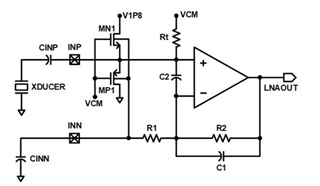Other Parts Discussed in Thread: TDC1000, PGA460
Is there any limitations on using external op amps?
We have added low-noise external amplifiers before the INP pin in order to detect faint objects and in the hope that it will reduce noise.
(The one mentioned in the related question. The thread is closed so let me ask again.)
The attached is the voltage data we obtained for the input and output of the PGA460-Q1's amplifier (IN and OUT series). The OUT data were obtained using the Test pin output functionality.
The IN waveform being approximately triangular, and gain being high enough to have some porition of the waveform output saturate, I expected the OUT waveform to be approximately trapezoidal, frequency characteristics ignored. However, I have obtained the not-so-trapezoidal OUT waveform instead.
For comparison, I added the output data of the PGA460-Q1's amplifier when we did not use external amplifiers but with otherwise same conditions, with the gain of PGA460-Q1 adjusted to compensate for the missing external amplifer (sorry, no input data here). The waveform is trapezoidal as expected.
My question is, why are my OUT data deformed like this? And is this use of external op amps just before the input of PGA460-Q1 valid? My concern is that the external op amp's output is so strong that the PGA460-Q1's receiver circuit might get confused.





